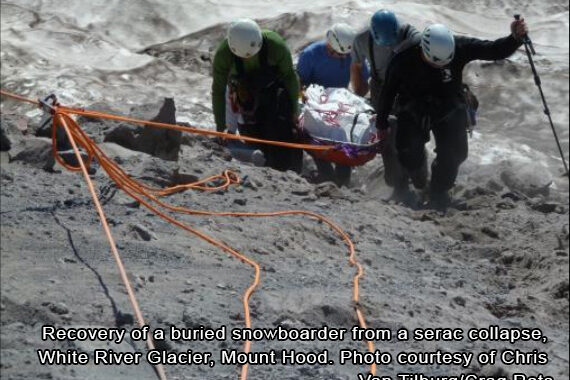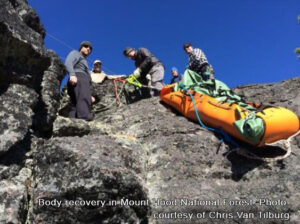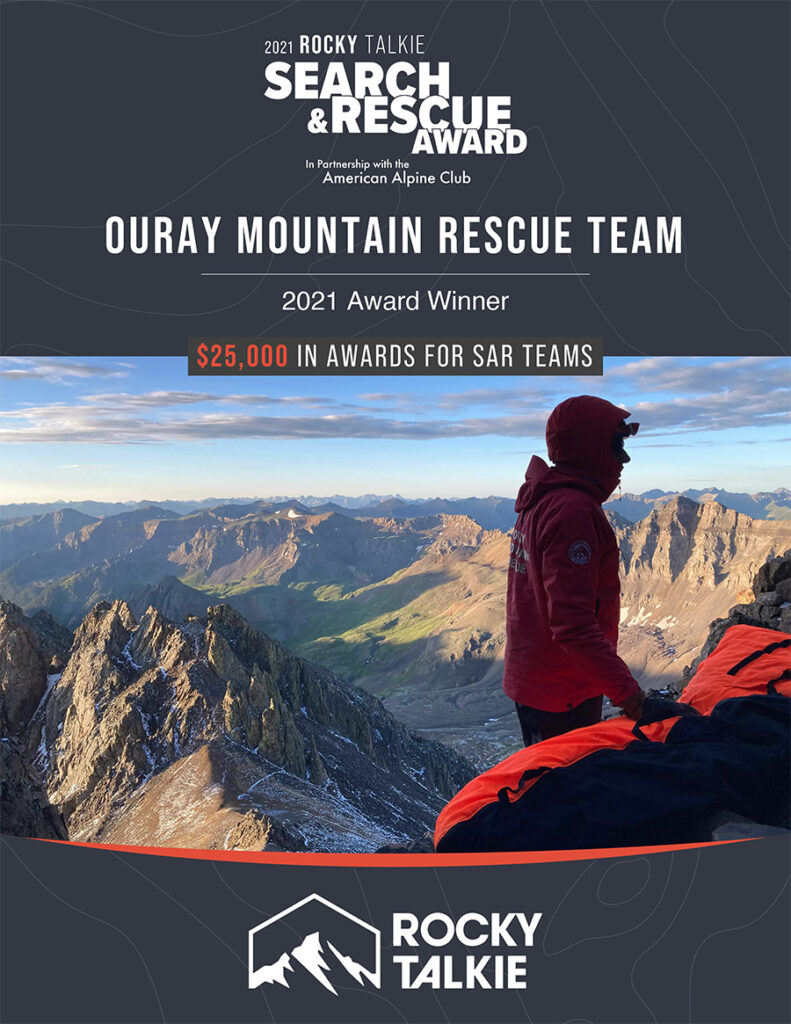By Chris Van Tilburg, M.D.; Chair, MRA MedCom; Crag Rats, Hood River, Oregon
Body recovery in mountain rescue is an important task for wilderness first responders. We handle recoveries differently than rescues of live persons because they are usually less urgent and sometimes have a forensic component. My mountain rescue team, Crag Rats, of Hood River, Oregon, has had many recoveries over the last two decades on Mount Hood and in the Columbia River Gorge. One of the worst was a triple fatality airplane crash. Some seem preventable: Once a man flying a drone walked off a cliff, presumably while staring at his phone. Another time a man was crushed by a serac on Mount Hood’s White River Glacier on a mid-August afternoon during a heat wave. Once we recovered an octogenarian on Mount Adams who had a heart attack at high camp. We’ve been involved in the body recoveries of two suicides and one homicide, as well as one search of a landfill for body parts. Here are some considerations for body recoveries: 1. Before the mission commences, take a safety pause. Team members should feel comfortable responding to the mission and have the ability to opt out without pressure. Even rescuers who have careers that encounter fatalities, like fire, police, and medical professionals, can encounter emotional stress. New team members should have guidance from senior leaders. 2. Secure the scene, prevent further injuries, and employ strict bloodborne pathogen precautions. Responders should wear heavy-duty nitrile medical gloves (7-8mm thick) either under or over their work gloves, and be pre pared to dispose of both pairs of gloves. Gloves should be turned inside out when removed from hands and put in biohazard or freezer bags for disposal. 3. Confirm the victim is dead and notify incident command. 4. Manage bystanders by appointing a team member to attend to them; evacuate bystanders as soon as reasonable. 5. Collect forensic evidence, GPS waypoints, and images. Secure the scene with crime-scene or surveyor tape. 6. Crag Rats often packages corpses using a body bag and SKED, which works well for snow and rough forest terrain. Other litters work well, depending on the situation, such as a wheeled litter on a smooth trail. Heavy duty body bags are not readily available at our local funeral home, so we order them at an online EMS or funeral home supply company.
Consider using two body bags to contain body flu ids. Once, on Mount Hood, we used a mesh bag designed for water rescue. 7. Don’t hesitate to leave the body for a delayed extrication if the scene is unsafe or if more planning needs to occur. 8. Debrief. A debrief can take several forms. We usually have a quick debrief at the end of the mission at search base and then an informal discussion at our next business meeting. Infrequently, we have a more expanded, formal debrief with a counselor or psychologist. Post traumatic stress and acute stress disorders are issues that affect rescuers and should be attended to. As medical advisor and senior member with expertise and experience at dealing with fatalities, I sometimes check in with junior team members via phone after recoveries. 9. Incident command may need to manage the scene prior to the arrival of SAR personnel. Issues that can be considered in communications with bystanders include a) securing the scene, b) confirming the fatality, c) keeping lay rescuers from extricating and evacuating the body, and d) watching for emotional responses of lay bystanders. 10. Finally, clean your gear if it has been exposed to bloodborne pathogens. We’ve found that water recoveries contaminate equipment more than those on snow or dirt because the waterlogged clothing and body extrudes blood-contaminated water.




